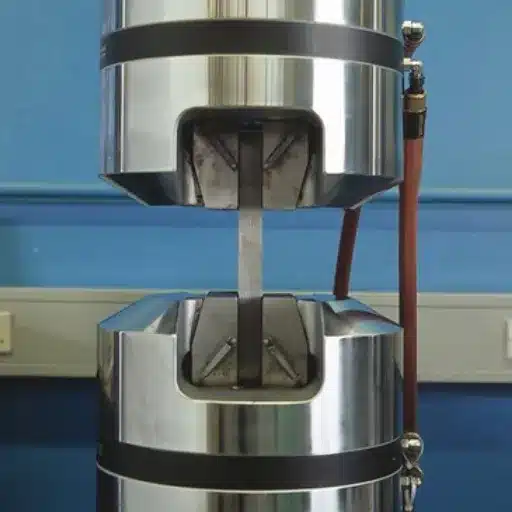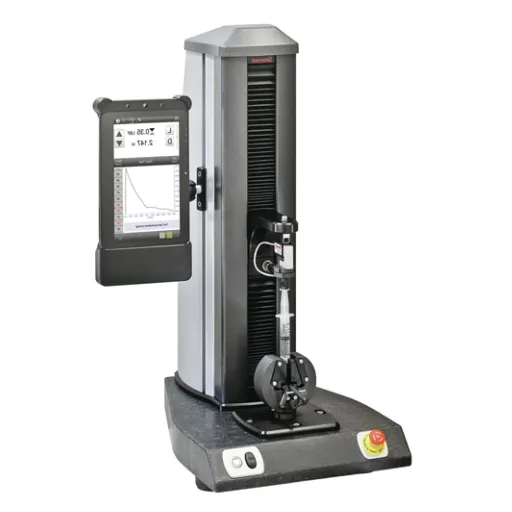Accurate measurement of rubber thickness is a critical process across various industries, from automotive to manufacturing and healthcare. Whether ensuring product consistency, meeting precise engineering specifications, or adhering to strict safety standards, mastering this skill is vital for quality control and performance optimization. This guide is designed to provide you with an in-depth understanding of the tools, techniques, and best practices for measuring rubber thickness effectively. By the end of this article, you’ll gain actionable insights into selecting the right equipment, avoiding common errors, and achieving reliable results every time. Stay tuned as we break down this essential topic step-by-step for professionals and enthusiasts alike.
What Are the Key Methods for Thickness Measurement in Rubber?
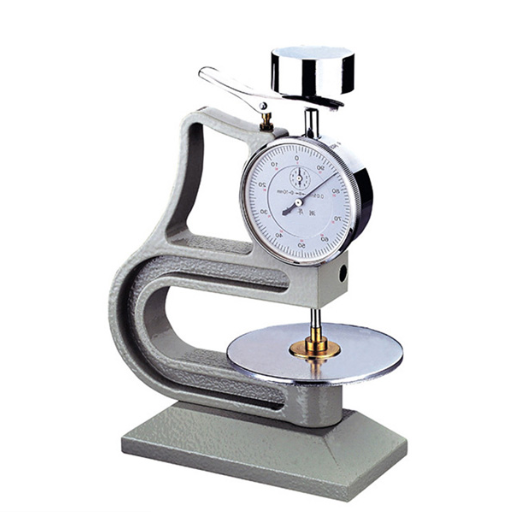
Key Methods for Thickness Measurement in Rubber
- Mechanical Gauges
Mechanical thickness gauges, such as micrometers, are commonly used for precise rubber measurements. These devices apply consistent pressure to measure thickness manually or semi-automatically.
- Ultrasonic Testing
Ultrasonic thickness testing involves transmitting sound waves through the rubber material and measuring the time it takes for the waves to reflect back. This non-destructive method is particularly effective for irregular or layered structures.
- Optical Measurement
Optical systems use lasers or cameras to scan the surface and measure rubber thickness. These methods are contactless, making them suitable for sensitive or soft materials.
- Contact Sensors
Contact-based techniques utilize probes or sensors to gauge the material, ideal for automated inspections in production lines.
These methods provide reliable options depending on the specific requirements of rubber measurement, such as thickness range, precision, and material properties.
How is a Thickness Gauge Used to Measure Rubber?
To measure rubber using a thickness gauge, I follow a systematic process to ensure precision. First, I prepare the material, ensuring the rubber surface is clean and flat to avoid measurement deviations. I then position the thickness gauge, either contacting or non-contacting depending on the application, at the desired measurement point. For contact-based gauges, I allow the probe to make gentle, even contact with the surface to record the thickness. For non-contact methods like laser or ultrasonic gauges, I ensure the device is properly aligned and calibrated for the material’s properties. Finally, I document the readings and repeat the measurement as needed for accuracy and consistency across the material. This process allows for efficient and reliable rubber thickness evaluation.
What Role Does an Ultrasonic Thickness Gauge Play in Rubber Measurement?
An ultrasonic thickness gauge has significant importance in accurately measuring the thickness of rubber non-destructively and precisely. This piece of equipment works with the help of sound waves; it sends ultrasonics through the object and calibrates the time taken for the sound to bounce back from the other side. Ultrasonic devices use the speed of sound in the material and a time-of-flight measurement to determine the thickness of the object.
Key Technical Parameters:
- Sound Velocity: Typically ranges from 1500 to 2500 m/s for rubber, depending on the specific type and composition.
- Frequency of the Probe: Commonly within 2 MHz to 10 MHz to ensure effective penetration and accurate readings in rubber materials.
- Measurement Accuracy: Most gauges offer accuracy within ±0.01 mm, which is suitable for precise industrial applications.
- Minimum Measurable Thickness: Generally starts at 0.5 mm, but this can vary based on the gauge and the nature of the rubber.
- Operating Temperature Range: Devices are usually rated for temperatures between -10°C and 60°C, allowing for flexibility in various environmental conditions.
By leveraging these parameters and aligning the device settings with the rubber’s properties, ultrasonic thickness gauges provide reliable results, making them indispensable for quality control and material inspection processes.
Are There Any Limitations When Measuring Rubber Sheet Thickness?
Yes, there are several limitations when using ultrasonic thickness gauges to measure rubber sheets. These include:
- Material Composition Variability: The heterogeneity of rubber sheets, such as the presence of fillers or reinforcements, can impact the accuracy of the ultrasonic readings due to inconsistent sound wave propagation.
- Surface Condition: Irregular or rough surfaces may scatter sound waves, potentially reducing measurement precision. The use of a suitable coupling agent can mitigate this issue, but surface preparation remains critical.
- Low Acoustic Impedance: Rubber’s relatively low acoustic impedance can cause weak signal reflections, particularly in thinner sheets, making it more challenging to obtain clear and repeatable readings.
- Temperature Sensitivity: Extreme temperatures can alter the acoustic properties of rubber, leading to variations in thickness measurements if the operating environment is outside the recommended range.
Understanding these limitations and employing proper calibration techniques can improve measurement reliability and ensure accurate results when assessing rubber sheet thickness.
How Does Quality Control Impact Rubber Thickness?
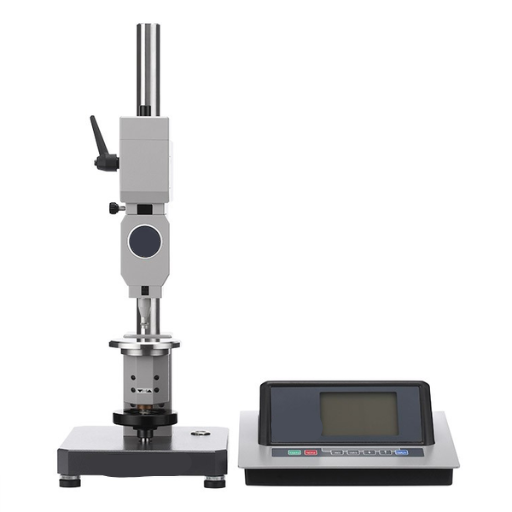
Quality control plays a critical role in maintaining consistent rubber thickness across manufacturing processes. By implementing rigorous inspection routines such as ultrasonic testing, micrometer measurements, and visual checks, variations in thickness due to material inconsistencies or production errors can be identified and corrected promptly. Additionally, quality control frameworks ensure compliance with industry standards, minimizing the risk of failure in applications that demand precise tolerances. Proper testing and monitoring not only improve product uniformity but also enhance performance, extending the life span of rubber components in demanding environments.
What Are the Standards for Rubber Thickness Measurement?
Rubber thickness measurement standards are primarily governed by international and regional quality organizations to ensure accuracy, reliability, and compliance across industries. Key standards include ISO 23529, which establishes general procedures for the physical testing of rubber, and ASTM D412, which addresses measurement techniques for rubber and elastomeric materials. These standards dictate permissible variances in rubber thickness and prescribe testing methodologies such as micrometer measurements, laser-based scanning, or non-destructive ultrasonic methods.
Current advancements emphasize the integration of precision instruments like digital micrometers and automated systems capable of detecting variations in thickness to sub-micron levels. Industry standards also accommodate environmental factors, providing detailed guidelines on conditioning samples to standardize tests. Additionally, according to recent data, many manufacturers are adopting smart technologies, combining measurement systems with real-time data analytics for stricter compliance and responsive quality control. These developments align with the growing need for sustainable manufacturing practices and reduced material waste.
How Does Compression Affect Measurement Accuracy?
Compression significantly impacts measurement accuracy by altering the physical dimensions and mechanical properties of the test material. When a material undergoes compression, it experiences stress, which can cause deformation. This deformation may skew measurements if the testing equipment lacks sufficient sensitivity or if proper calibration procedures are not followed. Additionally, factors such as the applied force, compression speed, and the material’s modulus of elasticity must be controlled to ensure reliable results.
Key technical parameters influencing measurement accuracy under compression include:
- Stress (σ): The force per unit area applied to the material. Typically measured in Pascals (Pa) or Megapascals (MPa).
- Strain (ε): The relative deformation expressed as a ratio of the change in length to the original length (unitless).
- Modulus of Elasticity (E): A material’s intrinsic property, indicating its stiffness, measured in Pascals (Pa).
- Compression Rate: The speed at which compression is applied, measured in mm/min or similar units.
- Environmental Conditions: Temperature and humidity during testing, which should align with standard specifications (e.g., ASTM or ISO standards).
By carefully monitoring and controlling these parameters, errors in measurement due to compression effects can be minimized, leading to more accurate and reproducible results.
What Factors Are Considered in Quality Control for Rubber?
- Tensile Strength and Elongation Properties: These determine the material’s ability to withstand stretching forces without breaking and are critical for ensuring durability in various applications.
- Hardness Testing: Measured using standardized methods (e.g., Shore A), this factor assesses the rubber’s resistance to deformation, which is crucial for load-bearing components.
- Compression Set: This evaluates the rubber’s capacity to return to its original shape after prolonged compression, ensuring long-term performance in sealing or cushioning applications.
- Abrasion Resistance: This measures how well the rubber material withstands wear and tear, particularly in scenarios involving consistent friction or contact with abrasive surfaces.
- Thermal Stability: Testing ensures that the rubber can endure exposure to varying temperatures without significant degradation in its physical or mechanical properties.
Which Applications Require Precise Rubber Thickness?
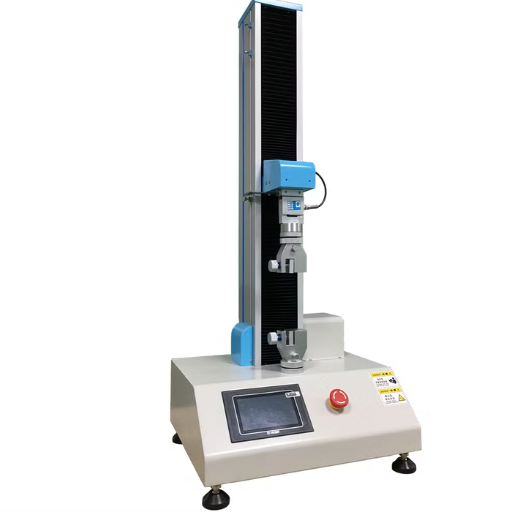
Precise rubber thickness is critical in applications where uniformity and exact specifications are essential for functionality and safety. For instance, in automotive industries, gaskets and seals rely on precise thickness to prevent fluid leaks and ensure optimal performance. Similarly, in electronics, rubber components like keypads or insulators require consistent thickness for accurate tactile response and electrical insulation. Medical devices also depend on precision in rubber thickness to maintain sterility and reliable functionality, such as in surgical tools or sealing components. Additionally, industries involving vibration isolation, such as construction and manufacturing, require exact thickness for effective energy absorption and mechanical stability.
How Is Rubber Thickness Important in Coating Applications?
Rubber thickness plays a crucial role in coating applications by ensuring uniform surface protection, durability, and performance under varying conditions. Optimal thickness provides a consistent barrier against wear, corrosion, and chemical exposure, which is essential in industrial environments. If the thickness is inadequate, the coating may fail, leading to compromised equipment lifespan and increased maintenance costs. On the other hand, overly thick coatings can introduce unnecessary weight and flexibility issues, potentially reducing efficiency. Precise control of rubber thickness is also vital in applications like anti-slip surfaces, waterproofing, and dielectric coatings, where the material must meet strict performance and safety requirements.
Why Is Accurate Measurement Vital for Roller Manufacturing?
Accurate measurement is crucial in roller manufacturing to ensure the final product meets operational and safety standards. Precise dimensional control is necessary to maintain proper roller balance, optimize performance, and minimize wear. Tolerances for roller diameter typically range between ±0.01 mm to ±0.05 mm, depending on the application, as deviations can lead to mechanical instability or uneven surface interactions. Additionally, accuracy in surface coating thickness, commonly specified within ±5% of the intended value, ensures adequate protection and functionality without introducing excessive weight. Measurements for roundness (e.g., ≤0.02 mm) and surface roughness (Ra ≤ 0.8 µm for highly dynamic systems) are also critical to maintaining smooth operation and uniform material contact. Proper measurement supports quality control, enhances system reliability, and reduces the risk of downstream manufacturing inefficiencies or failures.
What Are the Measurement Techniques for Different Types of Rubber?
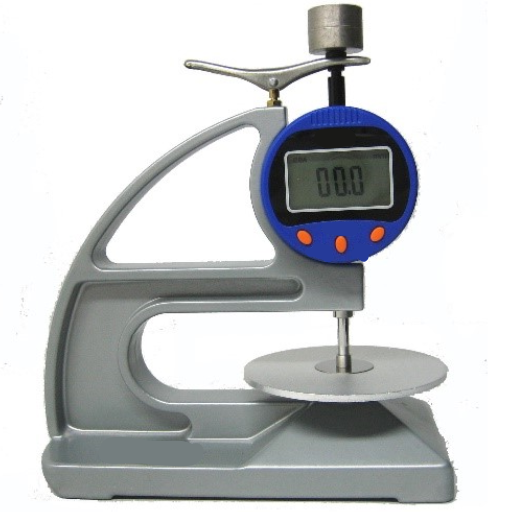
Different types of rubber are evaluated using measurement techniques such as tensile testing, hardness testing, compression set measurement, dynamic mechanical analysis, and thermal analysis to ensure their suitability for various applications.
|
Technique |
Purpose |
Key Parameters |
|---|---|---|
|
Tensile Testing |
Measures strength |
Strength, elong. |
|
Hardness Testing |
Determines hardness |
Shore A/D scale |
|
Compression Set |
Evaluates recovery |
Set %, duration |
|
Dynamic Analysis |
Examines behavior |
Modulus, damping |
How Do Measurement Sensors Vary for Different Rubber Materials?
The choice of measurement sensors for different rubber materials largely depends on the specific characteristics of the material and the property being measured. For instance, softer rubber materials may require highly sensitive sensors to detect subtle changes in deformation or stress, such as when conducting tensile testing or dynamic mechanical analysis. Harder rubbers, on the other hand, may utilize sensors with a broader measurement range to accurately capture higher loads and resistance levels. Additionally, the chemical composition and thermal behavior of the rubber also influence sensor requirements, particularly in thermal analysis, where precise temperature monitoring is crucial to track transitions like glass transition temperature (Tg). Advanced sensors designed for dynamic testing often incorporate high-frequency capabilities to assess complex moduli and damping properties across a variety of materials, ensuring reliable and application-specific results.
What Is the Role of Transducers in Measuring Rubber?
Transducers play a crucial role in the measurement and analysis of rubber by converting physical quantities, such as force, displacement, strain, or pressure, into measurable electrical signals. These signals are then processed to assess the mechanical and dynamic properties of rubber materials. For instance, during dynamic mechanical analysis, force and displacement transducers are used to measure stress and strain, enabling the calculation of parameters like storage modulus (E’), loss modulus (E”), and damping factor (tan δ). Precision and sensitivity are key attributes of transducers employed in rubber testing, as they must accurately detect subtle changes in mechanical behavior.
Key Technical Parameters for Transducers in Rubber Measurement:
- Sensitivity: Ability to detect minute changes in force or displacement (e.g., micro-newton or micrometer levels).
- Frequency Range: Must accommodate high-frequency testing (e.g., up to 1,000 Hz) for dynamic analyses.
- Resolution: Ensures fine-detail measurements, critical for quantifying properties like creep and hysteresis.
- Temperature Range: Suitable for thermal testing, often from -80°C to 200°C, to analyze transitions like Tg.
- Linearity: High linearity ensures consistent signal response across the range of measurement.
By adhering to these parameters, transducers can provide the precision and reliability required for in-depth rubber testing and characterization.
How Does Calibration Ensure Accurate Readings?
Calibration ensures accurate readings by aligning the transducer’s output with known reference standards, eliminating errors caused by environmental factors or equipment drift. By regularly recalibrating, I can ensure the measurements remain reliable and within the specified tolerances, providing confidence in the validity of the data collected during rubber testing and analysis.
How Do ASTM Standards Guide Rubber Thickness Measurement?
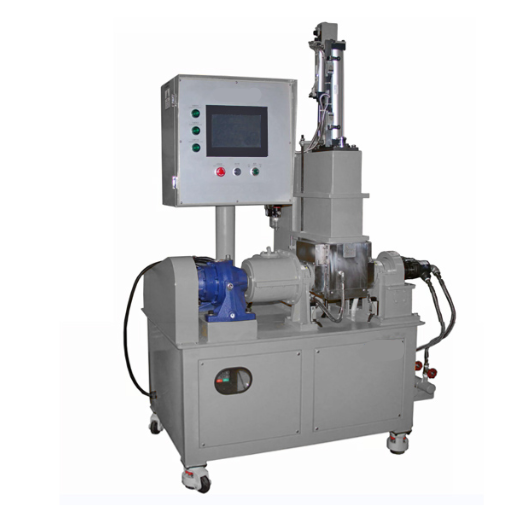
ASTM standards guide rubber thickness measurement by providing detailed protocols and specifications to ensure consistency, precision, and reproducibility. These standards define the tools, techniques, and environmental conditions required for accurate measurement, such as micrometer types and allowable tolerances. By adhering to ASTM standards, laboratories can align their practices with industry benchmarks, minimize variability, and maintain data integrity across different testing scenarios.
What Are the Specific ASTM Standards for Rubber?
ASTM International has developed a comprehensive set of standards for evaluating the properties, performance, and quality of rubber materials. These standards cater to numerous industries and applications, defining precise methodologies for testing and classification. Some of the most prominent ASTM standards for rubber include:
- ASTM D412 – Test Methods for Vulcanized Rubber and Thermoplastic Elastomers—Tension. This standard measures tensile strength, elongation, and other mechanical properties of rubber under controlled tension.
- ASTM D2240 – Test Method for Rubber Property—Durometer Hardness. It determines the hardness of rubber by using a durometer and classifies materials using Shore A or Shore D scales based on stiffness.
- ASTM D2000 – Classification System for Rubber Materials. This is a key specification for selecting rubber materials based on their physical properties and environmental resistance.
- ASTM D573 – Test Method for Rubber—Deterioration in an Air Oven. This method assesses the aging characteristics of rubber through heat exposure, simulating long-term performance.
- ASTM D1418 – Standard Practice for Rubber and Rubber Latices—Nomenclature. It establishes a consistent nomenclature system for synthetic and natural rubbers, aiding in standardizing material identification.
- ASTM D1056 – Specification for Flexible Cellular Materials—Sponge or Expanded Rubber. This standard outlines classification criteria for spongy rubber items based on their density, cell structure, and compressibility properties.
These standards ensure the consistent evaluation and comparison of rubber materials across various manufacturers and industries. By adopting ASTM standards, organizations comply with reliable, globally recognized protocols for product development, quality assurance, and performance testing.
How to Setup Measurement Tools According to ASTM?
To set up measurement tools according to ASTM standards, I would first thoroughly review the specific ASTM standard relevant to the material or test I am conducting. This ensures I understand the required specifications, including calibration, tool tolerances, and any environmental conditions outlined. Next, I would calibrate the measurement equipment using standard reference materials that comply with ASTM guidelines to ensure accuracy and repeatability. I would also verify that the tools are free from defects and meet the dimensional requirements mentioned in the standard. Lastly, I would document the setup process and perform a trial measurement to confirm compliance before proceeding with actual testing. This systematic approach ensures precision and adherence to ASTM protocols.
Reference Sources
-
Thickness Measurements on Rubber Sheets and Coatings – This source discusses ultrasonic thickness measurements and precision gauges for rubber sheets.
-
Rubber Thickness Gauge: Types, Applications, and Best Practices – Provides insights into types of rubber thickness gauges, calibration tips, and industry standards.
-
Top Rubber Testing Equipment in China
Frequently Asked Questions (FAQs)
Q: What is a rubber thickness gauge and how is it used in rubber manufacturing?
A: A rubber thickness gauge is used to measure the thickness of rubber materials. It is essential in rubber manufacturing to ensure product consistency and quality.
Q: How does a laser displacement sensor work for measuring rubber thickness?
A: A laser displacement sensor uses laser spots to accurately measure the surface of the rubber, providing precise thickness readings without physically contacting the material.
Q: What are the benefits of using a 45mg gauge with single element in rubber coating applications?
A: The 45mg gauge with single element software is beneficial for measuring the thickness of rubber coatings due to its high precision and ease of use.
Q: Why is quality control rubber industries crucial, and what is the relevance of a rubber thickness gauge in its context?
A: The quality control of rubber guarantees the effectiveness and reliability of rubber products. A rubber thickness gauge enables accurate measurement of cross-sectional thickness, which is essential in precision standards compliance.
Q: Is a rubber thickness gauge applicable to ultra-thin materials?
A: Indeed, through the use of modern technological advancements like top-tier ultrasonic capabilities, rubber thickness gauges can be designed for use with ultra-thin materials.
Q: What role does sound waves play in measuring rubber thickness?
A: Sound waves to measure thickness involve using ultrasonic technology, where sound waves are sent through the rubber, and the reflection time is measured to determine thickness.
Q: How do application notes assist in using devices like the 39dl plus and 72dl plus for rubber thickness measurement?
A: Application notes provide detailed guidance and instructions on using devices like the 39dl plus and 72dl plus, ensuring accurate thickness measurements and enhancing operational efficiency.
Q: What are test standards, and why are they important in the context of measuring rubber thickness?
A: Test standards are predefined criteria that ensure consistency and reliability in measurements. They are critical in measuring rubber thickness to meet industry specifications and ensure product quality.
Q: How is the 2.25 mhz frequency relevant in the context of rubber thickness measurement?
A: The 2.25 mhz frequency is often used in ultrasonic thickness gauges to penetrate thicker materials, providing accurate thickness measurements for various rubber applications.
Q: What industries commonly use rubber thickness gauges and why?
A: Rubber thickness gauges are used in industries like automotive, aerospace, and manufacturing to ensure the rubber components meet design specifications and performance requirements.





